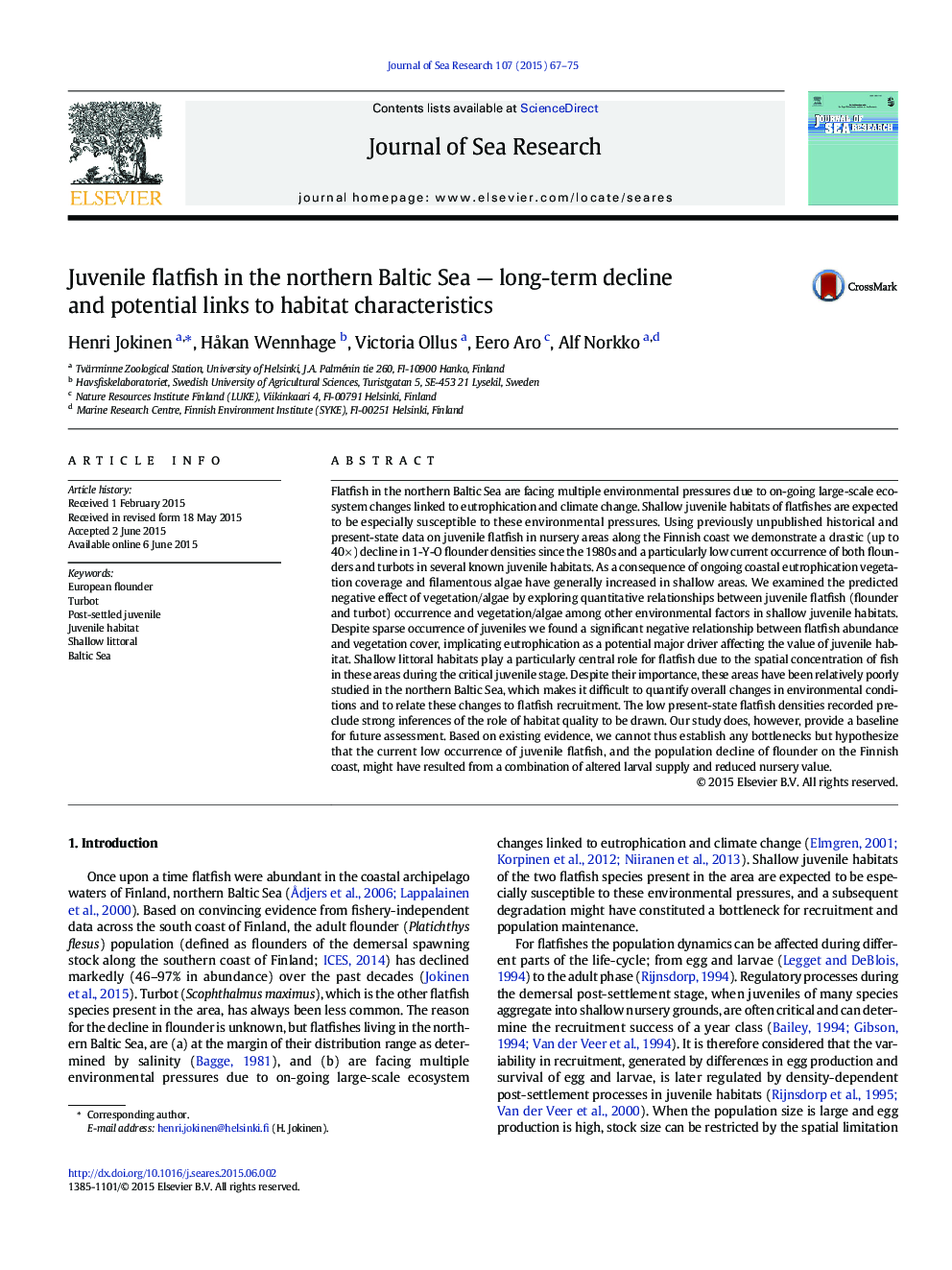| کد مقاله | کد نشریه | سال انتشار | مقاله انگلیسی | نسخه تمام متن |
|---|---|---|---|---|
| 4549638 | 1328088 | 2016 | 9 صفحه PDF | دانلود رایگان |
• Long-term drop (up to 40 ×) in juvenile flounders in the northern Baltic Sea
• Low current occurrence of flounder and turbot juveniles over a range of habitats
• A negative relationship between juvenile flatfish occurrence and vegetation/algae
Flatfish in the northern Baltic Sea are facing multiple environmental pressures due to on-going large-scale ecosystem changes linked to eutrophication and climate change. Shallow juvenile habitats of flatfishes are expected to be especially susceptible to these environmental pressures. Using previously unpublished historical and present-state data on juvenile flatfish in nursery areas along the Finnish coast we demonstrate a drastic (up to 40 ×) decline in 1-Y-O flounder densities since the 1980s and a particularly low current occurrence of both flounders and turbots in several known juvenile habitats. As a consequence of ongoing coastal eutrophication vegetation coverage and filamentous algae have generally increased in shallow areas. We examined the predicted negative effect of vegetation/algae by exploring quantitative relationships between juvenile flatfish (flounder and turbot) occurrence and vegetation/algae among other environmental factors in shallow juvenile habitats. Despite sparse occurrence of juveniles we found a significant negative relationship between flatfish abundance and vegetation cover, implicating eutrophication as a potential major driver affecting the value of juvenile habitat. Shallow littoral habitats play a particularly central role for flatfish due to the spatial concentration of fish in these areas during the critical juvenile stage. Despite their importance, these areas have been relatively poorly studied in the northern Baltic Sea, which makes it difficult to quantify overall changes in environmental conditions and to relate these changes to flatfish recruitment. The low present-state flatfish densities recorded preclude strong inferences of the role of habitat quality to be drawn. Our study does, however, provide a baseline for future assessment. Based on existing evidence, we cannot thus establish any bottlenecks but hypothesize that the current low occurrence of juvenile flatfish, and the population decline of flounder on the Finnish coast, might have resulted from a combination of altered larval supply and reduced nursery value.
Figure optionsDownload as PowerPoint slide
Journal: Journal of Sea Research - Volume 107, Part 1, January 2016, Pages 67–75
